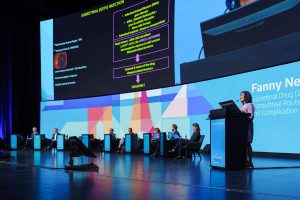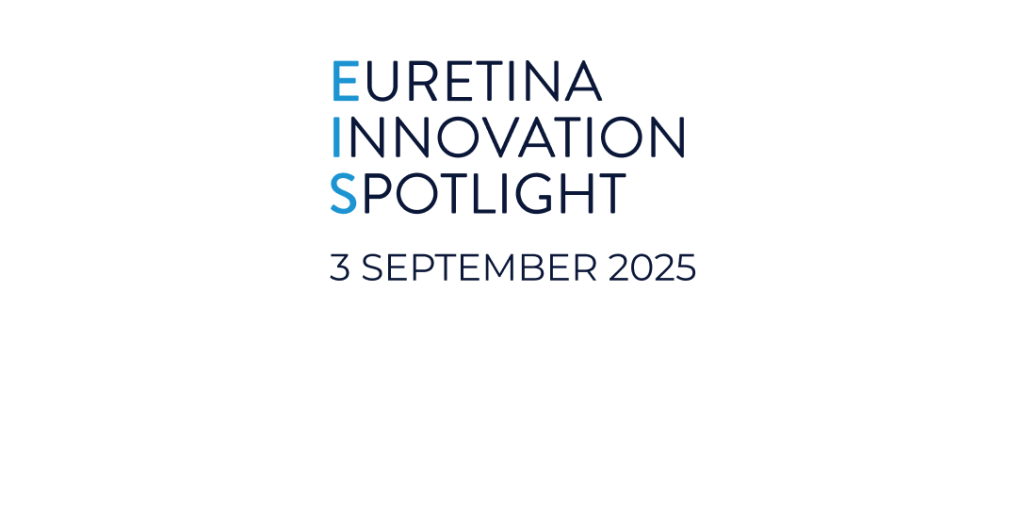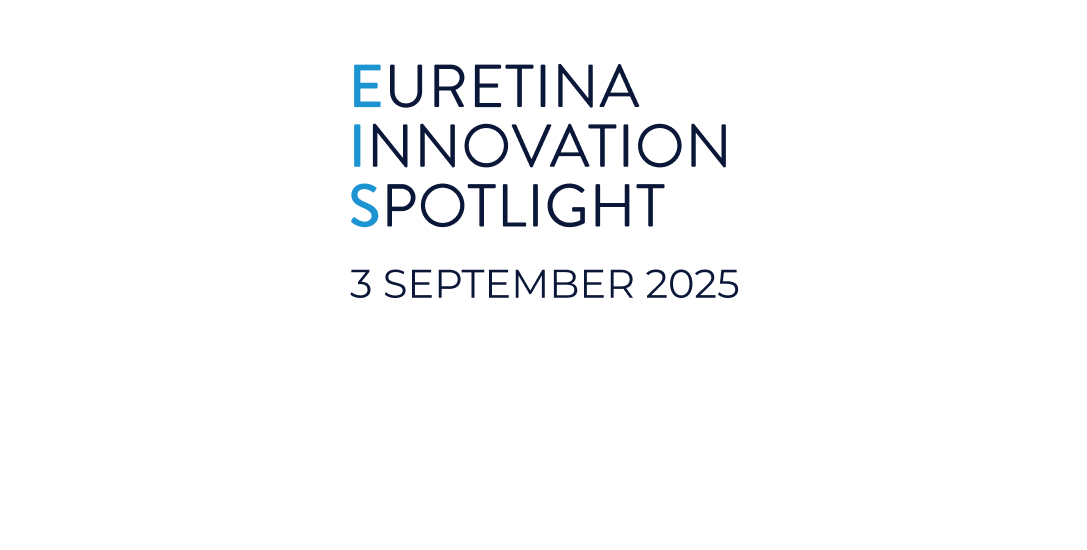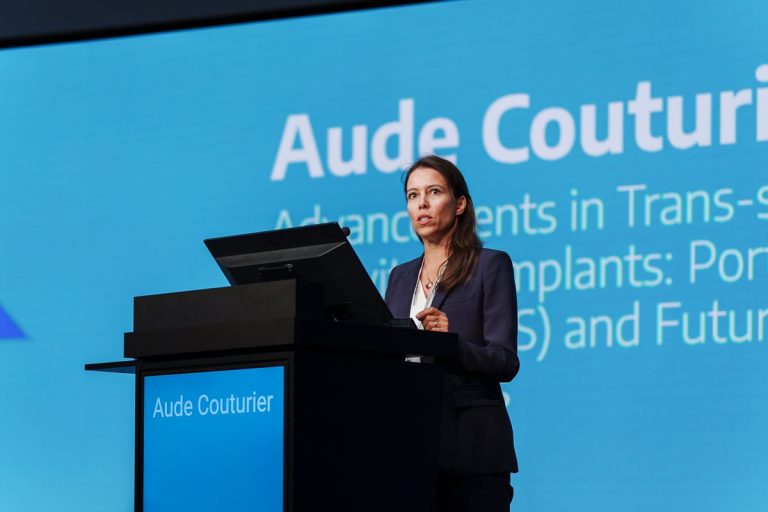Speakers at Euretina Session 5 presented next generation approaches to drug delivery. Opening the session, co-chair Dr. Grazia Pertile (Italy) said: “We are living in a very exciting time. We hope that we will be able to treat most of the retinal conditions in the future, including genetic diseases, but we also feel the burden of frequent injections. Today we are going to explore what is possible now and what will be possible beyond vitreoretinal injection.
Dr Aude Couturier (France) spoke first, talking about port delivery systems (PDS) as an advancement in transscleral intravitreal implants. She noted that only two (PDS) devices have advanced to human clinical trials of which only the ranibizumab PDS is commercially available.
Dr. Couturier described the ranibizumab PDS and the evolution of techniques for optimising the implantation and refill-exchange procedures. In addition, she presented data form phase 3 and long-term studies of the system. Dr. Couturier concluded her talk by noting that the PDS could be combined with other target molecules and described BURGUNDY, an ongoing phase 1/2 study investigating continuous delivery of zifibancimig with the PDS.
Dr. Fanny Nerinckx (Belgium) discussed subretinal drug delivery via the transvitreal route, including a description of devices, benefits, and complication risks. She highlighted the importance of injection technique and discussed various technological advances, such as automated micro-injection systems, that help to perform a controlled injection.
Noting that there are still limitations of manually performed injections, Dr. Nerinckx proposed that robotic-assisted technologies could overcome those issues, and she shared her experience using two different robotic systems. Discussing risks, Dr. Nerinckx cautioned about the need to be aware of complications associated with the subretinal injection itself. She noted emerging reports about the development of chorioretinal atrophy with voretigene neparvovec gene therapy and called attention to a recent publication describing the problem of and need to address gene-therapy associated uveitis induced by the adeno-associated viruses used as vectors.

Injections using a suprachoroidal approach were the topic for talks by Dr. Dominik Fischer (United Kingdom) and Dr. Siegfried Priglinger (Germany). Both speakers reviewed the rationale for using the suprachoroidal space (SCS) for subretinal drug delivery. Dr. Fischer described tools used to target the suprachoroidal space (SCS) for subretinal drug delivery with a focus on purpose built microneedles. Dr. Priglinger discussed transscleral injector systems and suprachoroidal catheterisation systems as well as direct surgical exposure of the choroid with an open sky approach. Discussing the latter approach in more detail, Dr Priglinger presented outcomes from a series of 70 patients that underwent suprachoroidal implantation of a slow-release dexamethasone device using an open surgical approach.
Dr. David Steel discussed fluid dynamics in transvitreal and suprachoroidal approaches for subretinal injections noting that surgeons need to understand that variability in the shape and direction of propagation of the subretinal bleb formed after the injection affects the delivered dose, treated area, and the risk of adverse effects. Therefore, surgeons need to carefully choose the retinotomy point and select the desired surgical parameters to control the delivery of advanced therapies given subretinally, he said.
Dr. Steel reviewed the variety of physical parameters that affect bleb characteristics and that can be used to predict and modulate the desired shape and area of retina treated. These parameters include retinal thickness, blood vessel position, intraocular pressure, and injection speed, He advised keeping intraocular pressure during injection, keeping injection pressure low, consider two or more blebs if the volume is large, use eccentric injection points if targeting the fovea, and avoid hypotony at the end of the procedure.
In the last presentation in the session, Dr. Ehab El Rayes (Egypt) described transconjunctival suprachoroidal buckling as a potential office-based procedure to treat retinal detachment in selected patients with retinal breaks. The technique is a modification of the suprachoroidal buckling approach published 12 years earlier by Dr. El Rayes and colleagues and involves injecting a long-lasting filler into the SCS using a newly developed cannula.
Dr. El Rayes demonstrated the procedure with videos and summarised findings from its use in a series of 34 patients, of which 19% were treated in an office-based procedure.
This session will be available for all registered attendees on demand.









